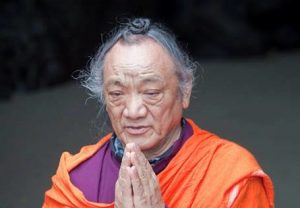HONG KONG—The Hong Kong Museum of History is hosting a large-scale exhibition titled Miles upon Miles: World Heritage along the Silk Road. Featuring more than 210 rare relics and artifacts, Miles Upon Miles offers visitors a unique glimpse into the varied cultures of Silk Road civilizations.
Focusing on the Chang’an-Tianshan Corridor, which extended through the Shaanxi, Henan, Gansu, and Xinjiang provinces of China and into Kyrgyzstan and Kazakhstan, exhibits on display include jade ware, jewelry, textiles, pottery, small statues, bronze vessels, and murals.
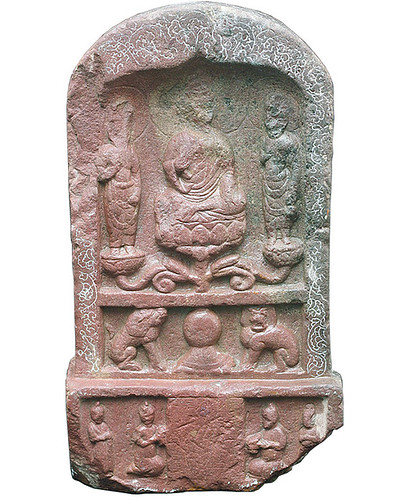
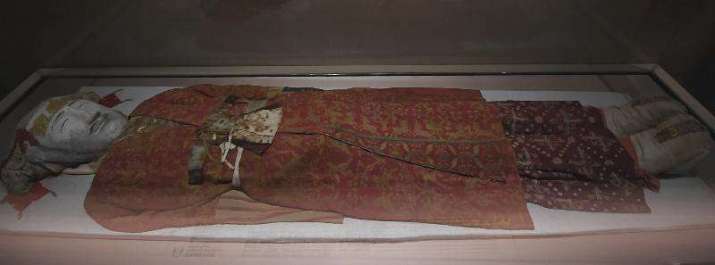
Taking its name from the lucrative trade in Chinese silk products that was conducted along its length, beginning during the Han dynasty (207 BCE–220 CE), the Silk Road was key to cultural as well as commercial interaction throughout Asia and as far west as the Mediterranean Sea. Trade on the Silk Road was a significant factor in the development of civilizations in China, the Indian subcontinent, Persia, Europe, Africa, and Arabia, and also led to cultural exchanges and the spread of syncretic philosophies and religious thought, including Buddhism, Christianity, and Islam.
The extensive network of land and marine trade routes spanned some 10,000 kilometers from east to west, and 3,000 kilometers from north to south. The first routes date back more than 2,000 years and the network remained active until about 500 years ago.
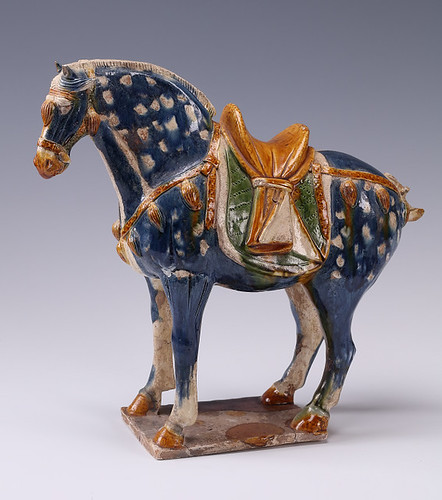
Collection of Luoyang Museum. From hk.history,museum
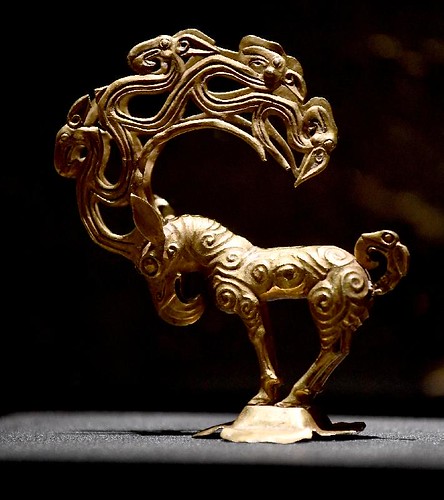
“With so many unprecedented Silk Road artifacts on display, the exhibition focuses on the cultural blending of Silk Road countries and China, especially those found along the Chang’an-Tianshan Corridor,” said acting museum director Terence Cheung. “There are 167 cultural relics from mainland China, including 163 cultural relics and four replicas, of which 97 are national-level relics, accounting for 58 per cent of the total number of exhibits. Another 50 are from Kazakhstan and Kyrgyzstan.”
Among the 210 precious cultural relics assembled for the exhibition, visitors can see more than 100 grade-one national treasures, including a gold sculpture of a mythical beast dated to the Warring States Period (475–221 BCE), a silkworm fashioned out of gilt bronze from the Han dynasty, and a Tang dynasty (618–907) mural of a camel and a Central Asian cameleer. One of the highlights of the exhibition is a Tang dynasty sancai* horse standing 81.2 centimeters high and decorated with white speckles over a blue glaze.

Also on show are more than 50 precious artifacts from Kazakhstan and Kyrgyzstan, presented to illustrate their unique cultural and religious heritage. Exhibits include a replica of 4th century BCE “Clothing and weaponry of the Golden Man,” from Kazakhtsan, a 2nd–1st century BCE lamp from Kazakhstan in the shape of an altar featurng figures of horsemen and animals, and a Buddhist stone carving dated to the 8th–10th century CE.
Perhaps the most lasting legacy of the Silk Road has been its role in bringing cultures and peoples into contact and facilitating cultural, intellectual, and spiritual exchange and interaction. On a practical level, merchants needed to learn the languages and customs of the countries they traveled through in order to trade successfully. The Silk Road also facilitated the spread of Buddhism throughout Central Asia and China, with Buddhist art and shrines being found as far apart as Bamiyan in Afghanistan, Mount Wutai in China, and Borobudur in Indonesia.
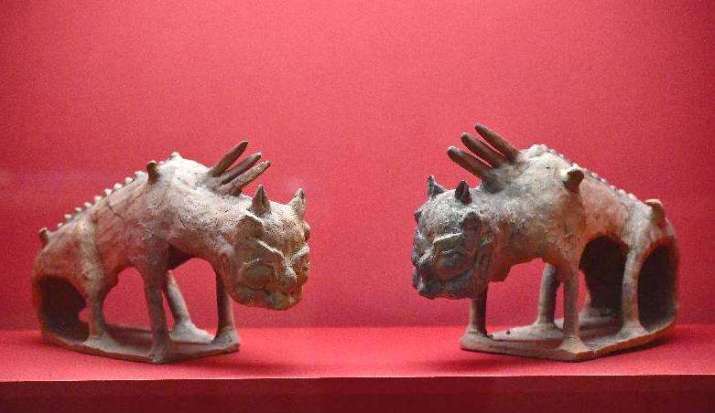
Thanks to the growing global attention to China’s “One Belt One Road” initiative, which is aimed at promoting economic ties between China and Central Asian nations, there has been renewed interest in the historic Silk Road in recent years. The exhibition, which began on 29 November 2017 and runs until 5 March, includes a host of multimedia content and interactive exhibits aimed at providing an enriching learning experience for this unique world heritage and a new understanding of the myths and splendor of the Silk Road.
* A type of pottery decoration particularly associated with the Tang dynasty that uses glazes or slip, predominantly in brown (or amber), green, and a creamy off-white.
See more
Miles upon Miles: World Heritage along the Silk Road (Hong Kong Museum of History)



